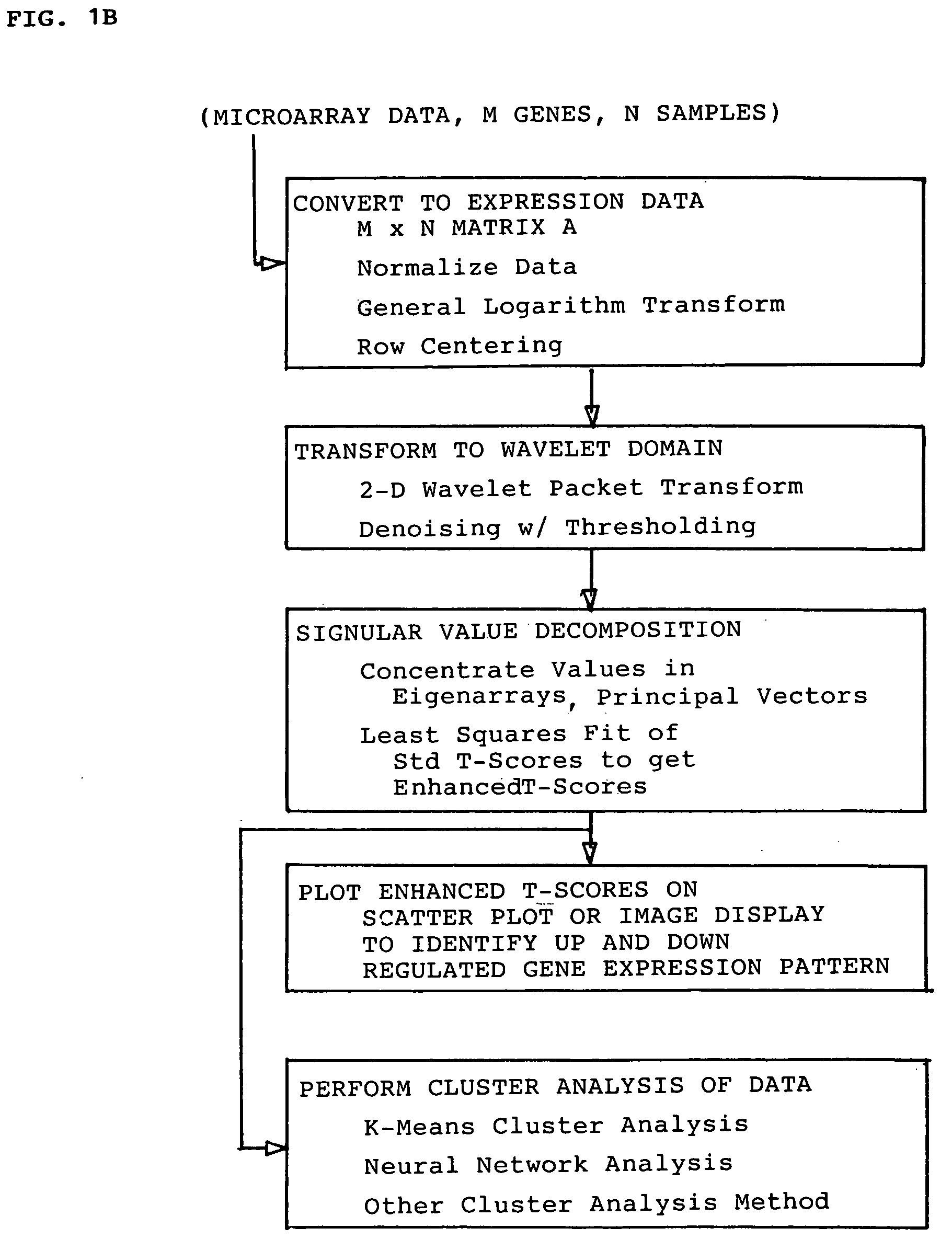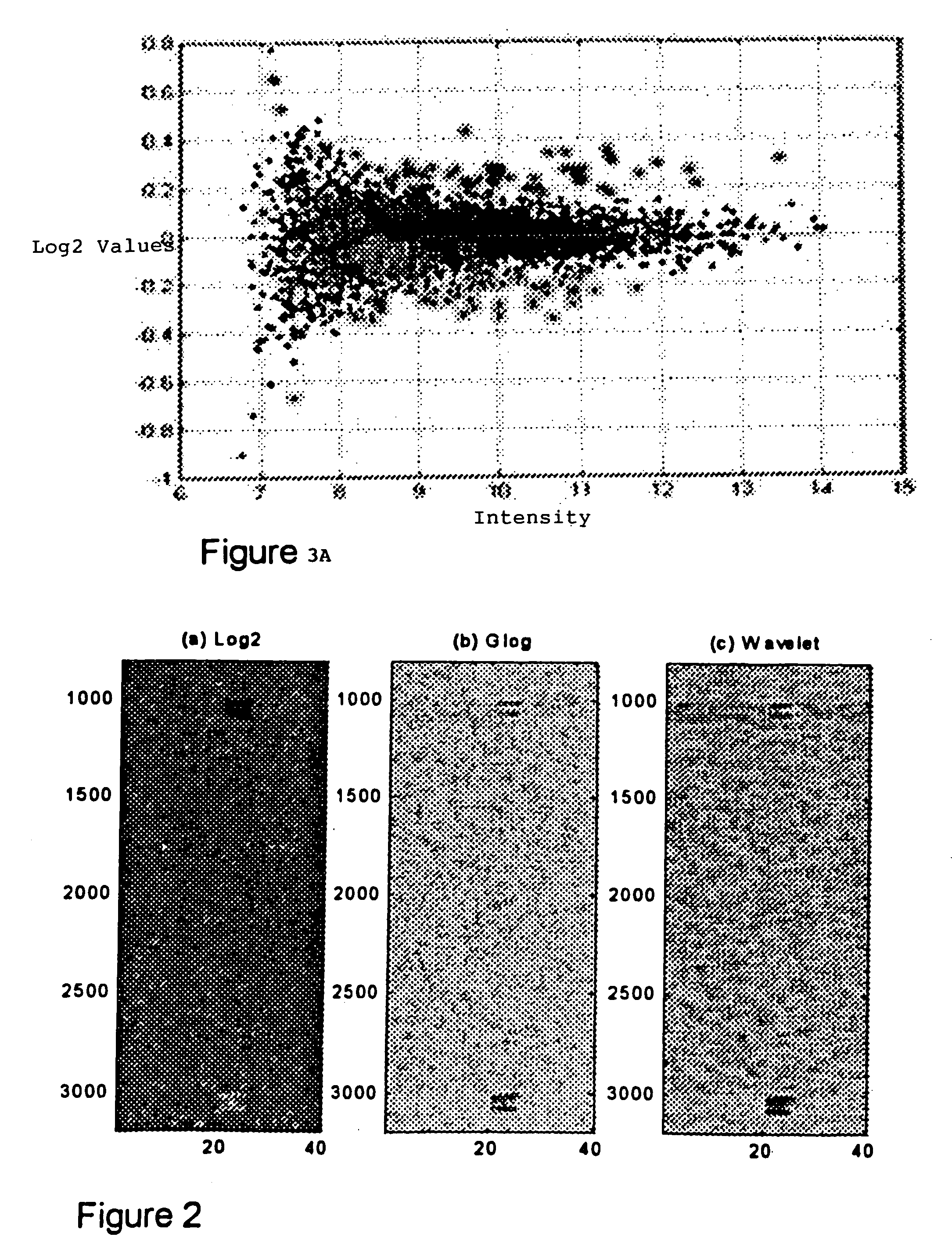Methods for enhanced detection & analysis of differentially expressed genes using gene chip microarrays
a gene chip and gene chip technology, applied in the field of statistical analysis of gene expression data, can solve the problems of difficult prediction, noise of fluorescence signals from such sequences, and difficulty in predicting the expression of any particular gene, so as to improve the signal-to-noise ratio (snr) of the expression data set, enhance the detection of differentially expressed genes, and broaden the focus
- Summary
- Abstract
- Description
- Claims
- Application Information
AI Technical Summary
Benefits of technology
Problems solved by technology
Method used
Image
Examples
Embodiment Construction
[0060] The present invention is directed to a novel method for enhanced detection and statistical analysis of gene expression data, which can identify high-confidence gene expression patterns in subject samples that would be suitable for studies in biomarker discovery, drug target validation, molecular diagnosis and prognosis, drug toxicity prediction, and a systems-level understanding of disease biology. Detecting differentially expressed genes is essentially a computationally intensive pattern recognition problem. A person familiar with this field will appreciate that the data generated by sophisticated statistical analysis methods of comparing gene expression data from microarray chip samples having thousands of gene probes thereon can be extremely complex and computationally intensive involving powerful parallel processing platforms. Sophisticated bioinformatics programming and data handling techniques are required. As such techniques would be well understood to those skilled in...
PUM
| Property | Measurement | Unit |
|---|---|---|
| Gene expression profile | aaaaa | aaaaa |
Abstract
Description
Claims
Application Information
 Login to View More
Login to View More - R&D
- Intellectual Property
- Life Sciences
- Materials
- Tech Scout
- Unparalleled Data Quality
- Higher Quality Content
- 60% Fewer Hallucinations
Browse by: Latest US Patents, China's latest patents, Technical Efficacy Thesaurus, Application Domain, Technology Topic, Popular Technical Reports.
© 2025 PatSnap. All rights reserved.Legal|Privacy policy|Modern Slavery Act Transparency Statement|Sitemap|About US| Contact US: help@patsnap.com



